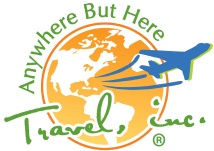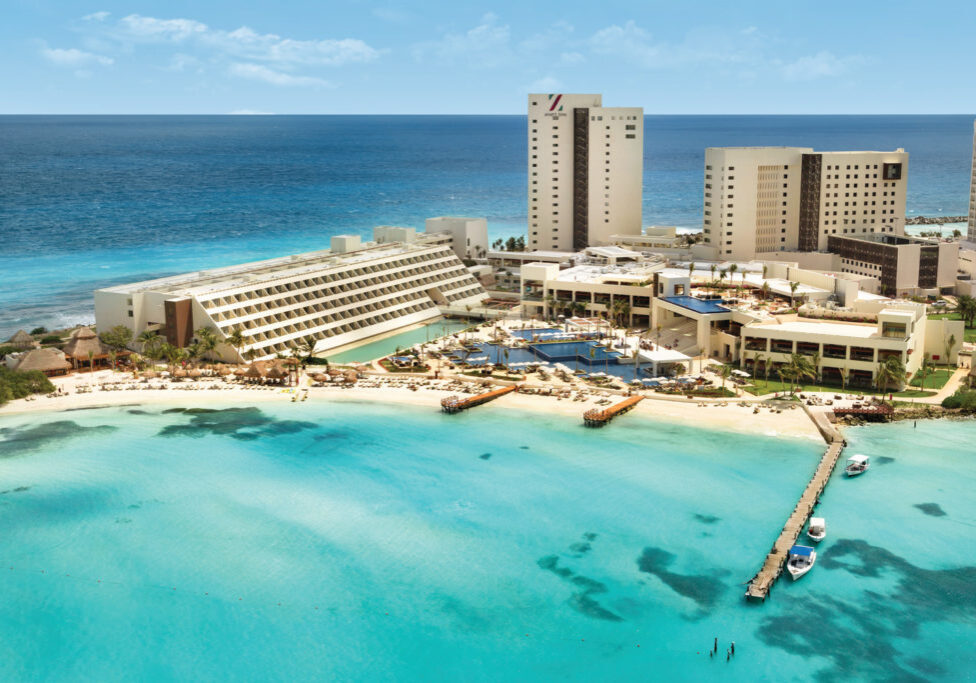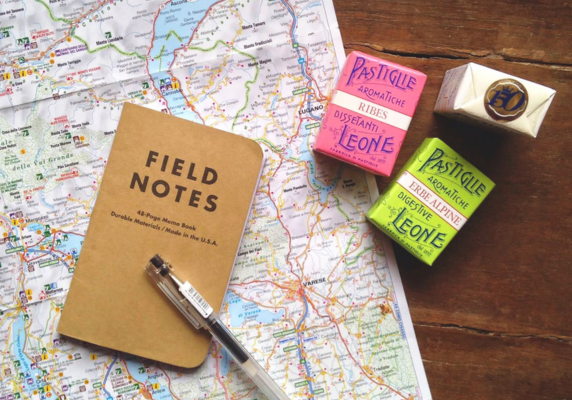Iceland
Iceland is an amazing country that is full of beautiful nature, wonderful food, and inspiring art and culture. It is commonly known for its extremes and being "The Land of Fire and Ice". Not only is it home to more than 200 volcanoes but also a number of glaciers as well. Iceland has a harsh and stark landscape that is marked with many hot springs and geysers. (Did you know "Geysir" is Icelandic in origin?)

Another Iceland extreme is that it is a land of light and dark. They have long summer days that last almost 24-hours of sunlight and very short winter days that are filled with darkness.
Iceland receives well over 1 million visitors a year but there are only 300,000 people who live in Iceland! Visitors come to this country to explore the harsh landscapes, soak in the hot springs, participate in the capital's nightlife, explore glaciers, view stunning waterfalls, gaze at the northern lights, dine on the unique cuisine, scuba dive between the continental plates, bird watching, whale watching, riding an Icelandic horse and much more.
The People
Iceland receives well over 1 million visitors a year but there are only 300,000 people who live in Iceland! Visitors come to this country to explore the harsh landscapes, soak in the hot springs, participate in the capital's nightlife, explore glaciers, view stunning waterfalls, gaze at the northern lights, dine on the unique cuisine, scuba dive between the continental plates, bird watching, whale watching, riding an Icelandic horse and much more.
The people of Iceland can seem quite reserved, yet they are very friendly. Icelanders are incredibly proud of their Viking heritage and language and strive to preserve their traditions. There is a high degree of gender equality in the country, with many women holding prominent positions in society. Reykjavík is a cultural hub hosting many theatres, art galleries, cinemas, museums, and more. Icelandic people are known by their first names, with surnames combining their father’s name with “son” or “daughter” added.

Geography
Iceland is the youngest landmass in Europe as it was formed just 25 million years ago. It is also where the oldest parliament was formed in 930 AD.
Iceland is a volcanic island that is perched on the active Mid-Atlantic Ridge. The Eurasian and North American tectonic plates are slowly pulling apart the country and adding about 5 cm / 2 inches of landmass per year. It is roughly the size of the state of Virginia and it is the 2nd largest island in Europe. Iceland is located just south of the Arctic Circle.
The country has about seven geographical regions and you can see most of them by driving the Ring Road (Highway 1). We suggest a 10-day tour around the island.
Southwest—The capital city is located on the Reykjanes Peninsula which dominates the region. It is also home to Iceland's international airport in the city of Keflavik and the Blue Lagoon which is Iceland's most popular tourist attraction. This area is a geothermal hot spot and much of the region's power is derived from this geothermal activity.
West—This is an area where culture, nature and history converge to create a unique experience for many travelers. It consists of fjords, valleys, waterfalls, craters, glaciers and volcanoes. The region is famous for Snæfellsjökull Glacier which has inspired writers, artists and poets through the years. In fact, it was the setting of Jules Verne's Journey to the Center of the Earth.
West Fjords—This region is probably one of Iceland's best kept secrets. The Westfjords is isolated and consists of unspoiled wilderness. It is an ideal place for spotting birds, arctic fox, North Atlantic puffin and other unique fauna in their natural habitats.
North—This is home to Iceland's second-largest city, Akureyri, which is rich in art, culture and history. It is also home to Dettifoss, which is Europe's most powerful waterfalls. People go here to whale-watch and observe humpback whales. During summer visitors can take advantage of the midnight sun when they play in the Arctic Open.
East Fjords—This region is known for Europe's largest glacier (Vatnajökull) and it is home to Iceland's largest forest. It also has fishing villages, fjords, farmlands, natural harbors, herds of free-roaming reindeer and more.
South—This area is home to one of the most popular tourist attractions, the Golden Circle, which takes visitors to Thingvellier National Park (home to the world's first parliament), the impressive Gullfoss waterfall and Geysir, a geothermal area full of geysers. The active volcano Hekla, which last erupted in 2000, is also in this region as well.
The Interior—Otherwise known as the Highlands, Iceland's interior is uninhabitable and virtually inaccessible for centuries. This area is filled with rocky deserts, jagged mountain peaks, volcanoes, ice caps, valleys, and hot springs. The Highlands are primarily accessible only during summer and primarily via 4x4 tours or on horseback. Winter travel should not be done without a trained guide.
Did You Know?
- The land's history is beset by volcanic eruptions, most notably one that erupted continuously for about 10 months in 1783, belching poisonous gases that destroyed pastures and crops. Almost 75% of the country's livestock and 20% of the people died from the resulting famine. More recently, in 2010, an ash cloud disrupted air traffic across Europe for several weeks.
- The interior of Iceland is so barren and moon-like that the Apollo astronauts did some of their training there. The area is classified as Europe's only desert.
- Iceland is virtually treeless. The island's growing season is short and there is little topsoil, so the few trees that exist are small and grow very slowly.
- Swimming is a way of life in Iceland. It's a compulsory part of the school curriculum. It's said that to find the pulse of the nation, visit one of the many geothermal pools, hot pots and saunas.
- Icelanders all seem to be related—or at least know each other. Nearly everyone living in the country can trace his or her descent back to the settlers listed in a 14th-century book called Lannamabok (Book of Settlers).
- Iceland is one of the most educated nations in the world, boasting 99.9% literacy. It also has one of the longest life expediencies and has the cleanest environments in Europe.
- There’s no need to buy bottled water. What comes out of the tap is pure, clean, tasty, and free.

Money & Currency
Currency: Icelandic króna (ISK). The coins feature beautiful sea creatures. Don’t worry if you don’t have any though. Credit and debit cards are accepted virtually everywhere.
Official Language(s): Icelandic. (English and Danish are widely spoken too)
Tipping: Tipping is never ever expected, but like everywhere in the world, appreciated.
Weather
Despite its northern location directly below the Arctic Circle, Iceland has relatively mild coastal weather due to the effects of the Gulf Stream. Snow is not as common as one would assume, but weather can be very unpredictable. Many say that a person can experience all four seasons in one day in Iceland.
Summer in Iceland is from May to early September and is characterized by warmer weather. The months of June and July experience nearly 24 hours of daylight. The average temperature in July in the southern part of the island ranges between 10-13˚C (50-55˚F), however, warm summer days can reach 20-25˚C (68-77˚F). Thunderstorms are rare in Iceland, and when they do occur, it is usually in late summer.
Summer is also one of the most popular seasons to visit and the high season is June to August (inclusive).
Packing tips for the summer: Layers! We recommend lightweight clothing for the day and warmer items for evenings. Some summer months experience nearly 24 hours of daylight, so sunglasses and hats are important. Iceland can get quite windy, so a good windbreaker is essential.
Winters are fairly mild considering Iceland’s northern location. The southern lowlands average temperatures around 0˚C (32˚F), with the highlands averaging around -10˚C (14˚F). The northern part of the country can drop to between -25 to -30˚C (-13 to -22˚F).
In the winter, we recommend that you pack clothing in medium to heavy materials. If you are venturing into the interior highlands, thermal underwear and warm and waterproof clothing are required.
A bathing suit can be used all year, as Iceland is famous for its geothermal pools and hot tubs that operate year-round.
Best Time To Visit
When it comes to enjoying specific activities, here are some guidelines.
- The Northern Lights or Aurora Borealis appear from September until April but February/March and September/October are the best months to see them.
- For whale watching, try April to October when you can see the whales in their natural habitat.
- Cross-country skiing is excellent from February onwards.
- For cultural activities and nightlife, Reykjavik offers these year-round. Geothermal pools also operate year-round.
- Christmas and New Year bring many special activities and attractions.
- Outside of summer, day tours from Reykjavik are less varied but still available.
- The popular Golden Circle tour runs year-round and two of its main attractions, the Strokkur geyser, and the Gullfoss waterfall can feel even more magical in winter.






